Each year, the coming of Thanksgiving and the Holidays signal a reminder to reflect on what we are grateful for and what we can do to spread that good feeling. Today, we look back on a season of programs packed with fun, adventure, and positive action. All to foster a community centered around a commitment to environmental stewardship, equitable access to water activity for youth in Annapolis, and serving the people who have so bravely served for us – our military veterans.
WAI KOA
Wai Koa is an adaptive paddling program for physically and mentally disabled veterans, active military, and first responders to get them outside and engaged in on-land and on-water activities.
Once a week between Memorial Day and Labor Day, members of the Live Water Foundation teach a dedicated group of partially disabled veterans rehabilitating at a local military hospital. The Veterans are taught the basics of stand-up paddleboarding in a group environment while socializing with one another.
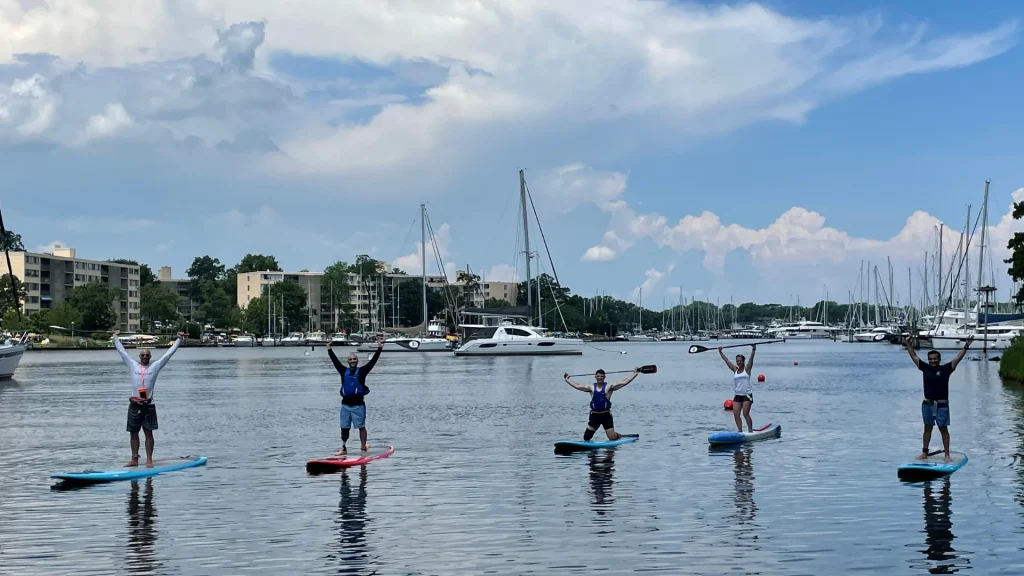
We also led Team Red, White, and Blue (Team RWB) and Wounded Warrior Project on paddle adventures, like guided tours through the various creeks and rivers of Annapolis or on land activities like helping to beautify the parks we enjoy. Throughout the season (May to September), we had seven events, each averaging about 15 participants.
When military veterans are returning home, they’re leaving a life that provides them with a clear sense of purpose day after day, as well as a built-in, tightly knit community. It is vital to their well-being that that sense of purpose and feeling of closeness isn’t suddenly torn away when they do get home.
“Giving people purpose is huge. Allowing them to feel accepted while still being active is huge,” says Harvey Naranjo, an adaptive sports director at a nearby military hospital. “It’s also providing meaningful activity. Because we’ve learned from our previous conflicts that you can’t just throw a prosthetic or wheelchair or whatever device on someone unless you’ve also given them goals and things to do. Because if not, all they’re going to do is take that device and maybe just sit in their room, and what does that serve?” adds Naranjo.
Naranjo says that he is choosy about which organizations he will work with because of how important inclusion is for the veterans he works with. To him, it’s not just about included; it’s also about being seen and heard. “There are many programs out there that will include you, but you still don’t feel welcome. The guys can feel it, especially in the environment they come from. You want to feel part of the team like you’re working for the team,” says Naranjo.
“The Live Water Foundation and Capital SUP team are wonderful,” says Naranjo, “It’s like [the veterans are] hanging out with friends, and people that [they] relate to, and can have all different types of conversations with. And they’re also motivating because they’re young guys who are out there– they’re athletes, they’re business people, and they’re also within their age group. They’re peers.”
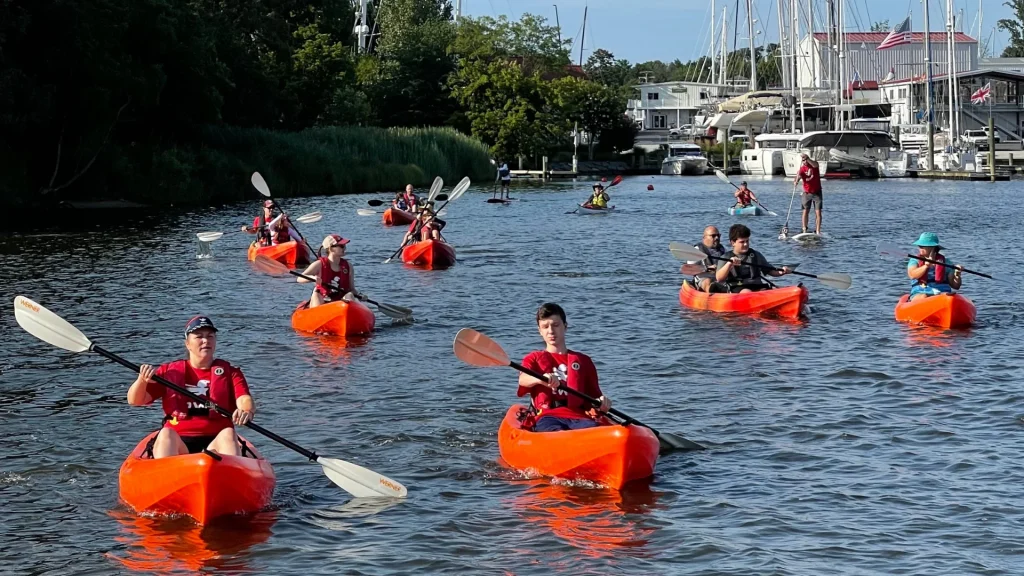
Team RWB is essentially a nationwide network for military members to connect through physical activity, from paddleboarding to rock climbing and everything in between. Ken Fitzgerald, a chapter leader of Team RWB, also emphasized the importance of feeling that camaraderie. “We’ve been working with the Live Water Foundation and Capital SUP team for a few years now, and it’s just a great feeling of everybody getting together and hanging out. Chris “Goose” Norman would teach a fitness class, and it sort of started there and became doing these paddles on Back Creek. The [Live Water Ambassadors] would be pointing things out and answering any questions, acting as sort of ‘on-water mentors,'” said Fitzgerald.
Our Wai Koa program makes so much sense to us because of our focus on community enrichment. We always honor and respect our veterans, but we also recognize that they are a significant part of our local community in Annapolis and the DC Metro area in general. With more troops coming home every day, we are hopeful that this program will continue to make a meaningful impact. “Not everyone’s going to go back home after an injury or a deployment – sometimes there was a reason they left home,” says Naranjo. “And then after an injury, they’re trying to figure things out, ‘Where am I going to go? What am I going to do? Where am I going to feel comfortable?’ Giving them options to get exposure to new communities is a huge rehabilitative resource that we provide just by accessing programs [like Wai Koa].”
JUNIOR WAI KOA
Annapolis is synonymous with being on the water. Whether you’re a student here, a long-time resident, a seasonal worker, or just passing through, two things come to mind when you think of Annapolis: The State House and the water.
However, spending time on the water isn’t as easy as it should be, and it seldom happens for some of Annapolis’ most disadvantaged youth. Our Junior Wai Koa program provides an unforgettable summer experience for children living in communities under the Housing Authority of the City of Annapolis (HACA). This year, we were able to add two sessions to our regular four-session camp, allowing us to offer kids a summer-long experience.
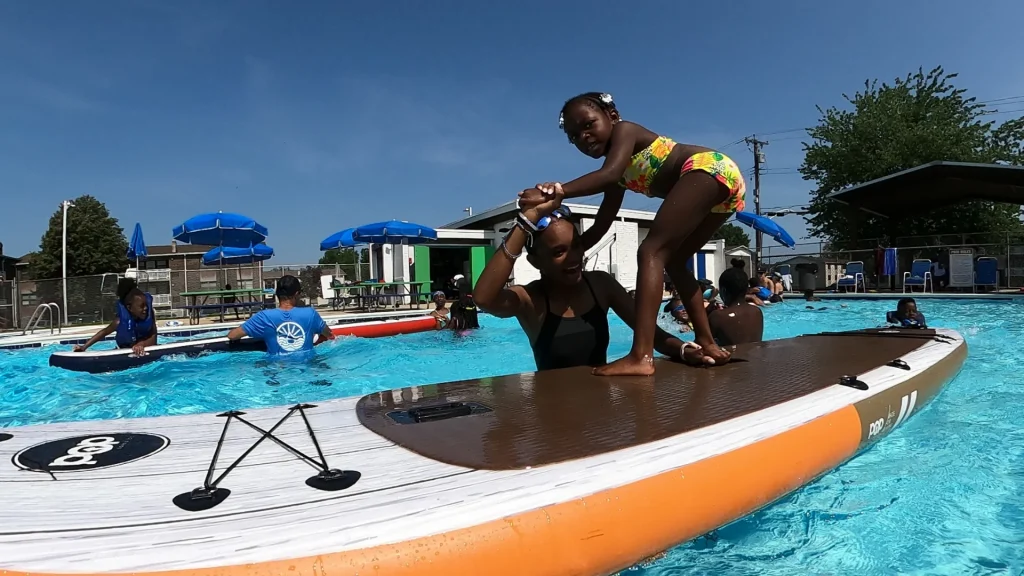
“The children were totally thrilled,” said Sarah Clarke-Akinrinde, a HACA curriculum specialist and case manager, who chaperoned the children. “We started at the HACA swimming pool, and the children were very engaged. At the end of that day, the kids were looking forward to their next time with the Live Water group, but I figured [the excitement] would fade. But by the time we got to the creek, it was out of this world – every child was asking me, ‘Can we go back? Can we go back?’. They were really excited.”
Akinrinde says that other than the Live Water camp, the kids’ options are minimal. There are only two pools to accommodate the four developments. Even if parents know of paddleboarding or kayaking, the cost of rental equipment or transportation to the water acts as a barrier. “Mostly, what we provide for them is what they get,” says Akinrinde. “We get this opportunity every year to take them out on a sailboat where they go to the harbor, and they are out in the water for like an hour and 30 minutes, but that’s about it.”

This year, we were able to add two more sessions to our regular four-session camp, allowing us to welcome even more children. “As a chaperone, I was scared out of my mind,” said Akinrinde, “But the Live Water team made it so easy; they were just phenomenal, providing the children with all the equipment that they needed and then giving them a little snack at the end of the session.”
“It was good for the soul. It was good for the kids,” says Akinrinde, adding, “And it was good for me as well.”
CLEAN WATER & ECO INITIATIVES
We utilize community action to beautify our parks and clean our waterways by empowering individuals to actively look after what they can enjoy. Last April, we teamed up with Annapolis City Greenscape, UpCycle, Capital SUP, and dozens of volunteers to revive the Ellen O. Moyer Nature Park after a long and isolating winter that left it in need of attention.
Together, we removed trash from the land and the water, cut down dead trees, and hauled off dozens of bags of yard waste. Under the helpful guidance of Annapolis City Greenscape, we planted over 50 perennial flowers and grasses, some of which into a flower bed made by UpCycle from 100% recycled materials.
Full-Service Marylanders Grow Oysters Program
Since 2008, the Severn River Association (SRA) has diligently repopulated oyster reefs and facilitated Chesapeake Bay restoration. The strength and persistence of the SRA – a civic organization in operation since 1911 – has galvanized over 400 community residents to take part in the Marylanders Grow Oysters program, an initiative started by Oyster Recovery Partnership that allows waterfront property owners to maintain cages of spat-on-shell (oyster larvae) to repopulate designated sanctuary reefs.

We hugely admire the work of the SRA and asked ourselves what we could do to aid in their effort. In 2015, Live Water Foundation board member and Capital SUP CEO Kevin Haigis decided to try his hand at oyster growing and personally managed 50 cages in Spa Creek. Haigis’ experiment was successful, but not without a bit of assistance in cage maintenance. From there, an idea was sparked, and with the generous funding of the nonprofit Palmer Foundation, our Full-Service MGO Program was born.
Through the power of Capital SUP’s community engagement, volunteers aided us in building 80 oyster cages that we installed for our first full-service participants: Bert Jabin Yacht Yard, Severn House Condominiums, Oasis Marinas at Nautilus Point (Formerly Watergate), and several Back Creek waterfront residents.
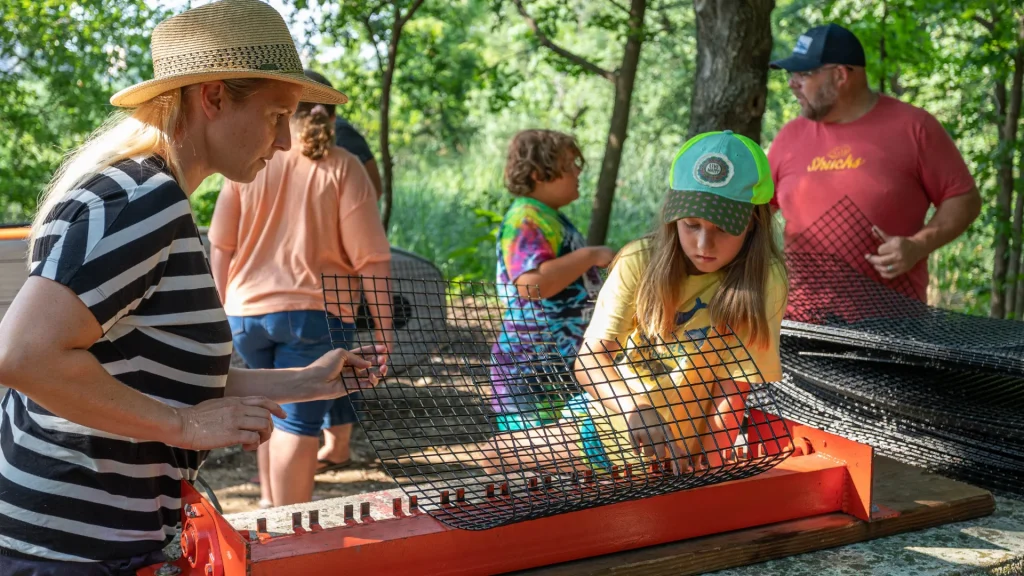
We’re also pleased to hear that the cage builds have inspired more people to take part. “We are getting more requests for cage building and questions about growing oysters [with Marylanders Grow Oysters],” said ORP representative Kaylee Fleury. “Having dedicated partners at the Live Water Foundation helps play a part in contributing to the success of our programming.”
Live Water Foundation Co-Founder and President Brian Meyer said that the full-service program – an idea of his for several years – aims to close the gap by doing all the work to grow the oysters for a small fee. “The self-service model is great; however, there are a lot of waterfront residents and businesses with piers in Annapolis that chose not to participate for a variety of reasons,” says Meyer. “My vision is one day every pier in the Annapolis waterways will be participating in oyster growing by way of the self-service or full-service model. Achieving this vision will require a collective effort from numerous local nonprofit organizations.”
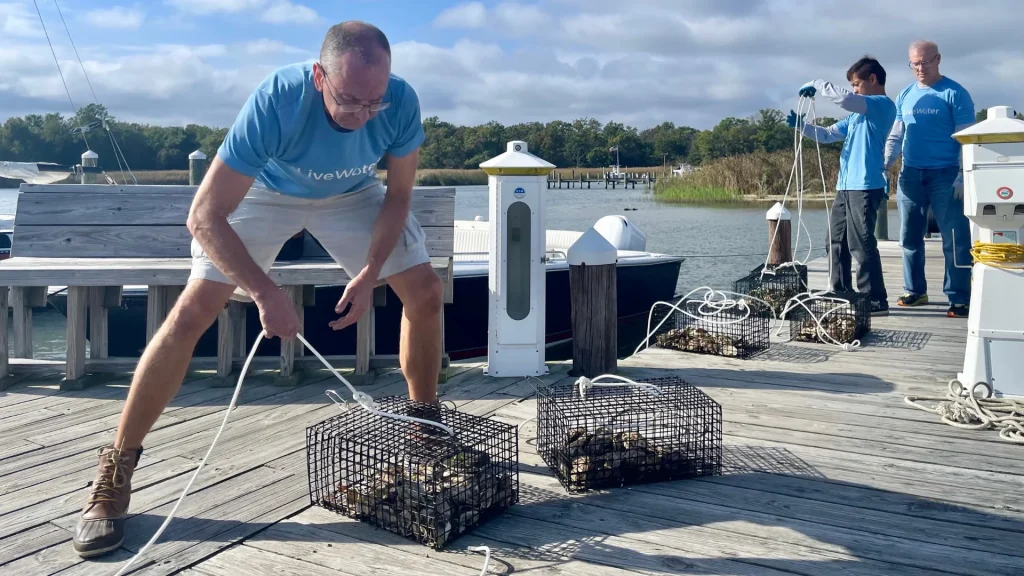
We are humbled by the success of these programs and the feedback we have received. There are no limits to what can be accomplished when communities organize. The continued success of these programs is emblematic of what can be done when putting an actionable goal in front of people. Of course, we all want to help our neighbors, but we don’t always know how. We view it as our job to implement solutions that work, and we know what works because we are watching it happen. Given the opportunity, people do come together. We aim to not only provide the option but to make it incredibly easy to reach.
The momentum of this past season’s success propels us into our 2022 planning with even bigger goals. We were so happy to add two sessions to our Junior Wai Koa program because it allowed us to provide a summer camp experience for groups of 20 or more children for the full six-week camp. But we would love to offer two sessions a week or accommodate as many kids as we can. Ideally, we could do both.
$150 will sponsor one Underserved Youth to partake in our Junior Wai Koa Program
DONATE
We continue to have many veterans who request having another paddle session for Wai Koa, and we think we could work with even more people. Ken Fitzgerald talked about how they often have people from out of town who join paddles. “Team RWB has an app,” says Fitzgerald, “and events are advertised by Chapter, so if someone is visiting, they can look at the app and see there’s a paddle event happening in Annapolis.” We envision Annapolis as a hub for veterans and military members to connect and socialize, but we need help getting there.
$250 will sponsor one Wounded Warrior to partake in our Wai Koa Program.
DONATE
This year, Marylanders have raised enough spat for ORP to plant 3.5 million oysters, and the MGO program continues to grow. But we are billions of oysters away from reaching our restoration goal, and we know we can help. Our team will continue to build as many cages as possible, but they will need to be filled.

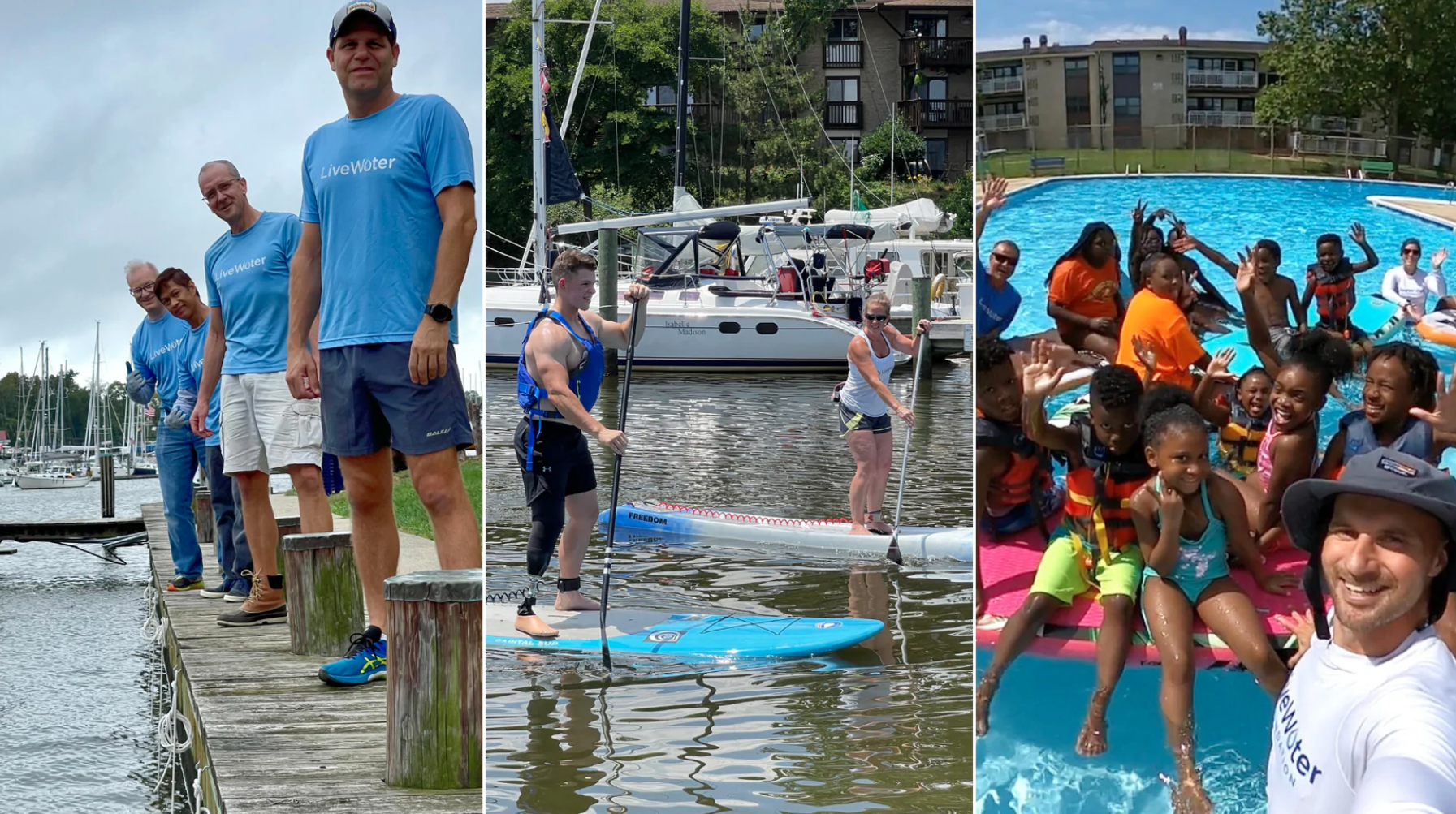
0 Comments